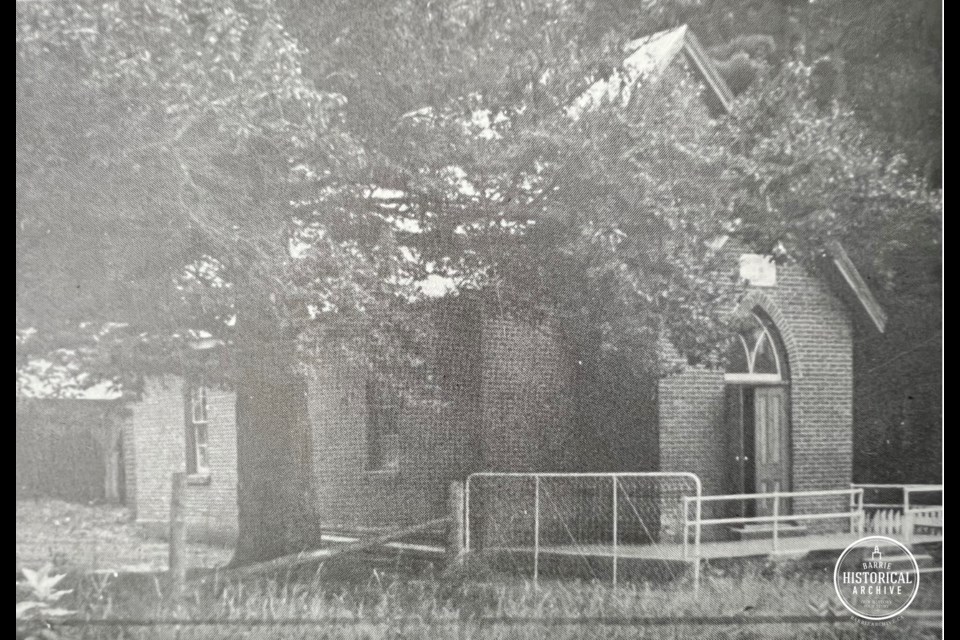This ongoing series from Barrie Historical Archive curator Deb Exel shows old photos from the collection and one from the present day, as well as the story behind them.
The Little Brown Church – Midhurst
Like many rural communities, in the early pioneer days before actual churches were built, folks gathered in private homes to worship and ministers travelled a circuit to visit these small settlements, conducting church services and performing marriages and baptisms.
Oftentimes, halls and other venues were shared by multiple congregations until their own buildings could be erected.
The Presbyterians of Midhurst met in the 1880s for the purpose of achieving agreement on the building of their own church. The land for the church was donated by William Finlay and members of the congregation provided the lumber and labour for the project – only cement and nails had to be purchased.
With volunteer effort and the expertise of stonemason Charles Stewart, carpenter W. Williams and plasterer Alfred Cochrane, the debt-free church was constructed.
In the summer of 1887, the charming frame church in the pretty glen on Doran Road was dedicated.
The early church was rustic, heated by a huge box stove at the front of the church, reportedly that could hold a three-foot log, and a second box stove in the vestry.
The church was lit with hanging coal oil lamps, bracket lamps on the walls at each window and lanterns in the entrance and vestibule.
Churches, as everyone knows, are places of celebration and sadness. The day after the initial service, a lovely garden party in the church grove was held to recognize the opening of the first Presbyterian Church in the village of Midhurst. The Craighurst band provided the entertainment for this well-attended event.
Conversely, in times of mourning, the church caretaker draped the pulpit and choir area with black bows and cloth for the occasion of funerals.
Other events, such as box socials, quilting bees, strawberry suppers and other projects would be held to raise funds for items like a church organ and to help financially support the little church.
The signature event of the year was the annual church picnic on Dominion Day (July 1). Families would begin to arrive at 1 p.m., hampers laden with all manner of homemade delights. The afternoon would be spent playing games and sports and with children splurging saved pennies on treats such as ice cream, candy, lemonade and gum, sold in a booth run by the ladies of the congregation. At 5 p.m., the crowd would sit down at long tables to enjoy a shared community dinner.
With the Methodist and Presbyterian church union of 1925, the little church became the United Church of Canada.
By 1949, the old frame building had been bricked and was ready for expansion. The sheds behind the church were demolished and the materials repurposed to add a Sunday School room and a kitchen to the church. Once again, volunteer labour and reused materials resulted in a debt-free renovation.
The remains of the early pioneer burial ground can still be found on Doran Road, not far from the church. In 1892, a meeting was held at the Presbyterian church to form a ‘Joint Stock Company for a Burying Ground at Midhurst’. The land was surveyed for $4 and shares were sold for $10 each. The shareholders pitched in to clear the land, helping to remove tree stumps, and to build a fence around the cemetery ground.
The beautiful and peaceful wooded site adjoins the church property.
Although a new church sanctuary was opened in 1994, the original Midhurst Presbyterian/United Church building still stands today.



